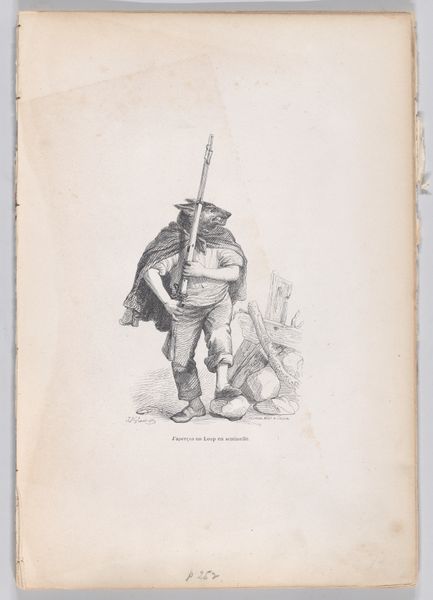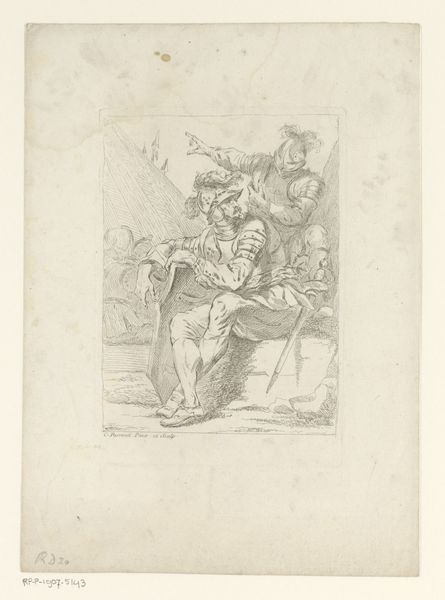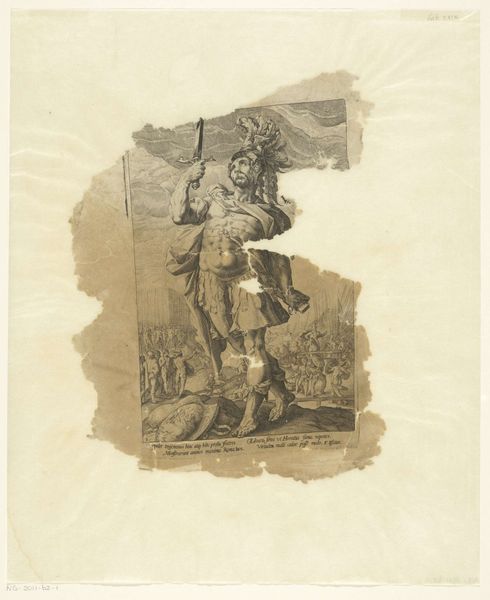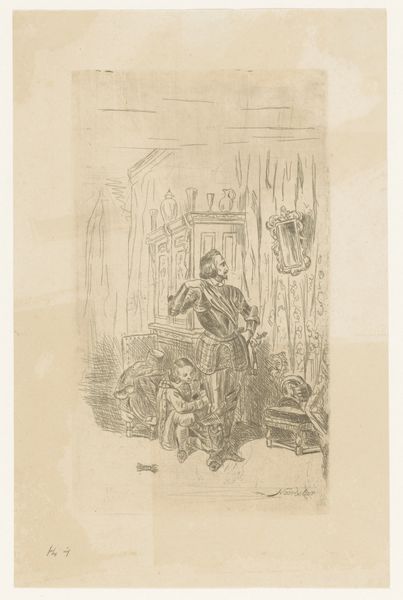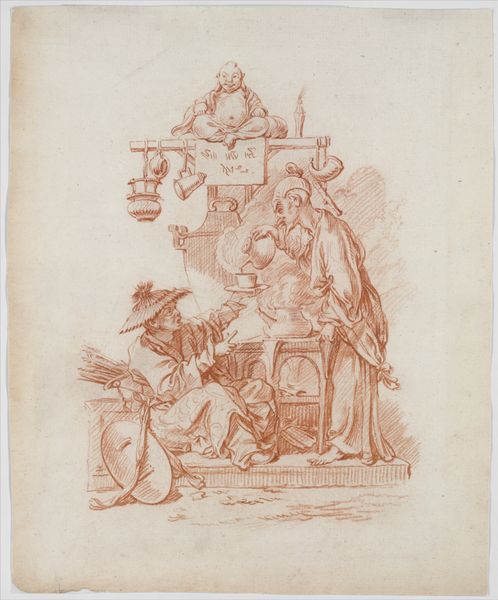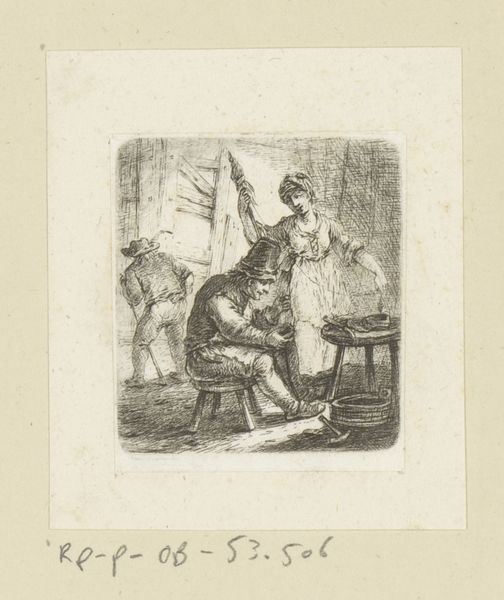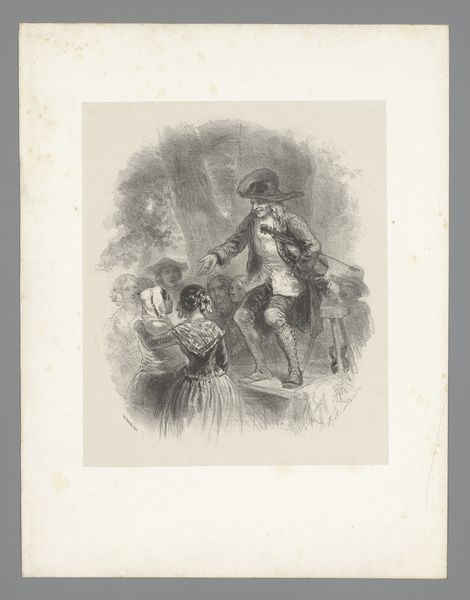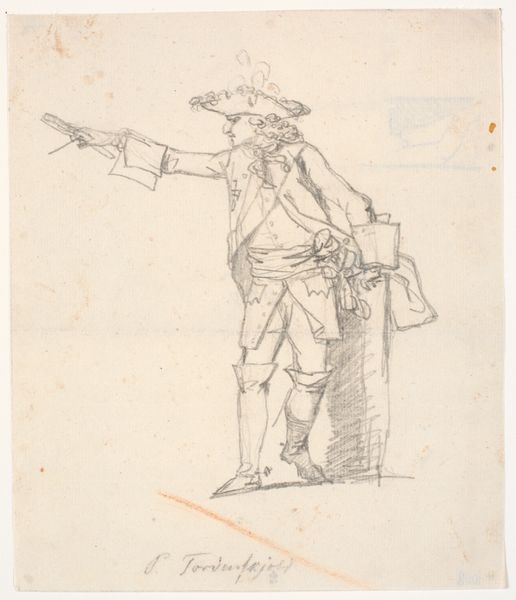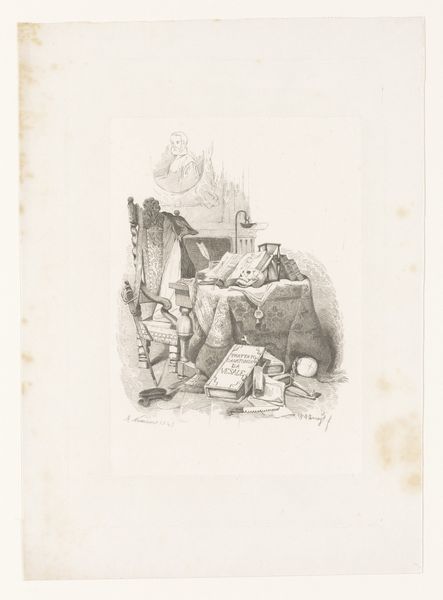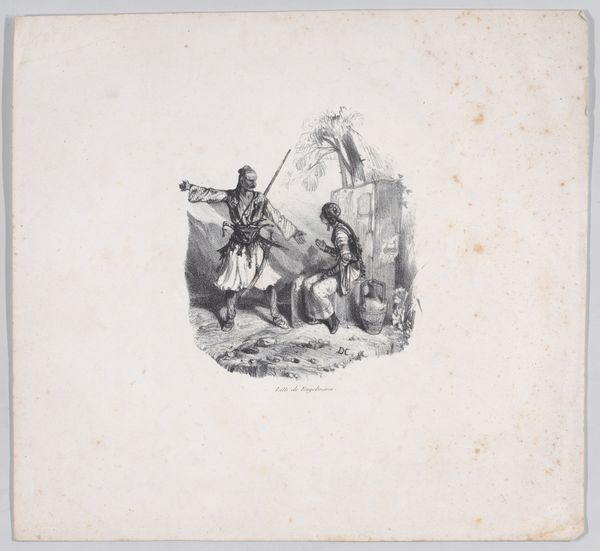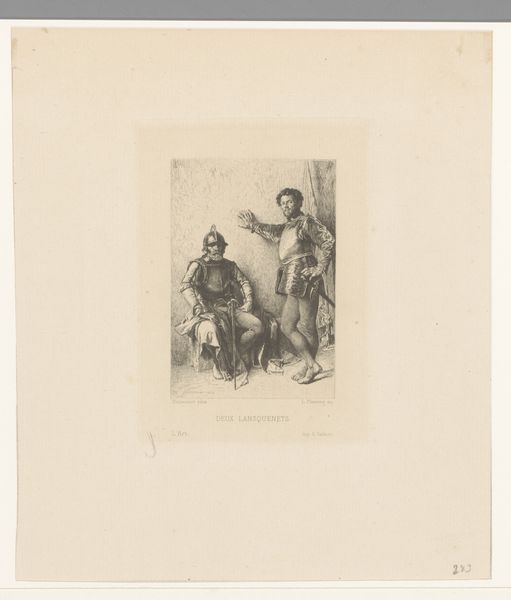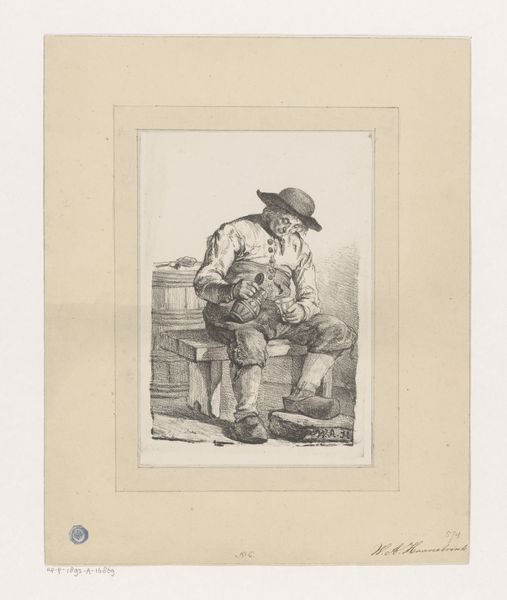
drawing, graphic-art, pencil
#
drawing
#
graphic-art
#
caricature
#
pencil sketch
#
romanticism
#
pencil
#
sketchbook art
Dimensions: height 339 mm, width 256 mm
Copyright: Rijks Museum: Open Domain
Curator: We're looking at a pencil drawing, “Advertentie voor uitgever Gihaut te Parijs”, dating roughly from 1820 to 1844, created by Nicolas Toussaint Charlet. It's currently held at the Rijksmuseum. What are your first thoughts? Editor: My first thought is "festive chaos!" There's a distinct carnivalesque energy radiating from these two figures, a fiddler and a clown. Curator: Absolutely. Note how Charlet, working only with pencil, has still managed to suggest such dynamism and implied sound. It highlights the accessibility of graphic arts in early 19th-century Paris, a means of communication available to many beyond traditional painted canvases. What do you make of the imagery itself? Editor: Well, the most prominent symbol is, of course, the banner advertising Gihaut, the Parisian publisher. But it is delivered by archetypal clowns who occupy a transgressive position in social hierachies, offering critical observations, lampooning public personas and trends. And a tipped-over barrel is pouring documents everywhere – representing, perhaps, the proliferation of printed material at the time. Curator: Indeed, that spillage of papers speaks volumes about the increasing mass production of images and texts, suggesting an information overload— a concern of modern society that seems to be brewing already! The roughness of the sketch itself, rendered in pencil, adds to this sense of immediacy, almost as if the artist were capturing a fleeting street performance. Editor: You’re right. Also, consider the clothing - these are not garments made from rich dyes; this production would not have been a luxurious endeavor. The choice of character underscores that it would have been entertainment accessible to the general public. Curator: Good point. It emphasizes the drawing's purpose as advertisement, as the figures and text would be used to invite anyone from boulevard to "enter" and check "albums of all sizes and colours"! Editor: The lettering on the banner mimics a theatrical sign. Charlet ingeniously fuses high-art skill with low-art commercial purpose! Curator: And I appreciate how it invites the viewer into this scene, much like the actual advertisement hoped to entice people into the publisher's shop. Thanks to his choice of medium and execution we can learn volumes about the social context in which these types of printed media circulated! Editor: I'm struck, too, by how these playful figures create an enduring message. Their energy seems just as compelling today, advertising for all generations who have the privilege of coming face to face with it at the Rijksmuseum.
Comments
No comments
Be the first to comment and join the conversation on the ultimate creative platform.
